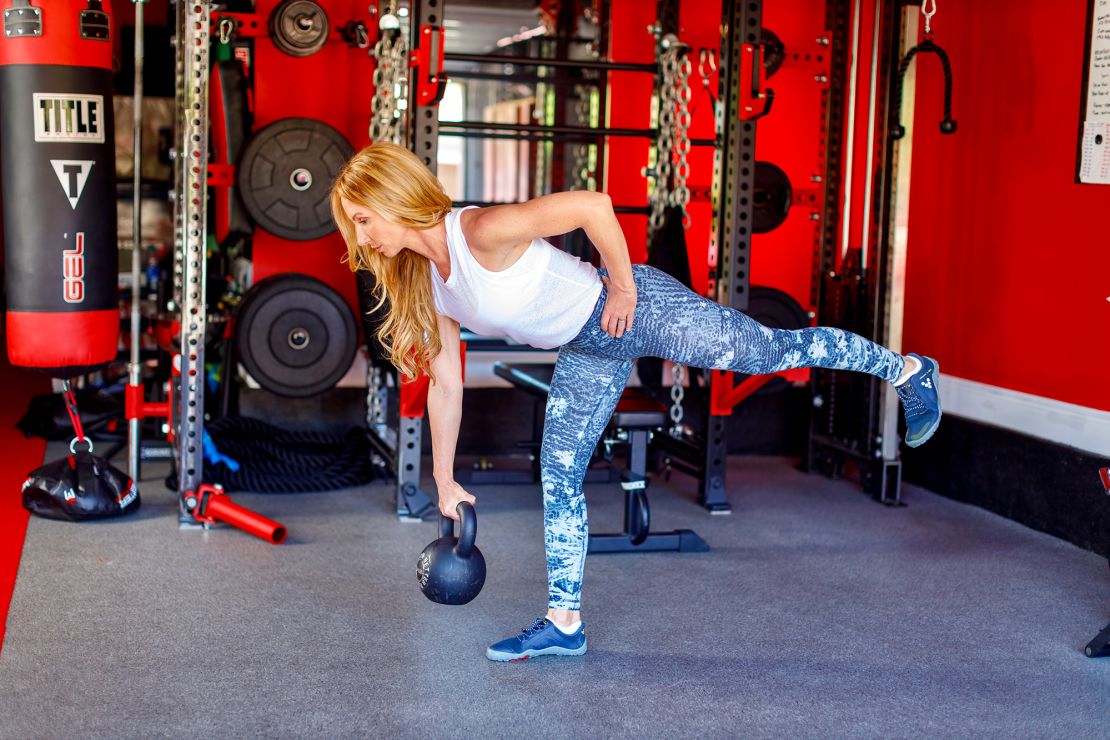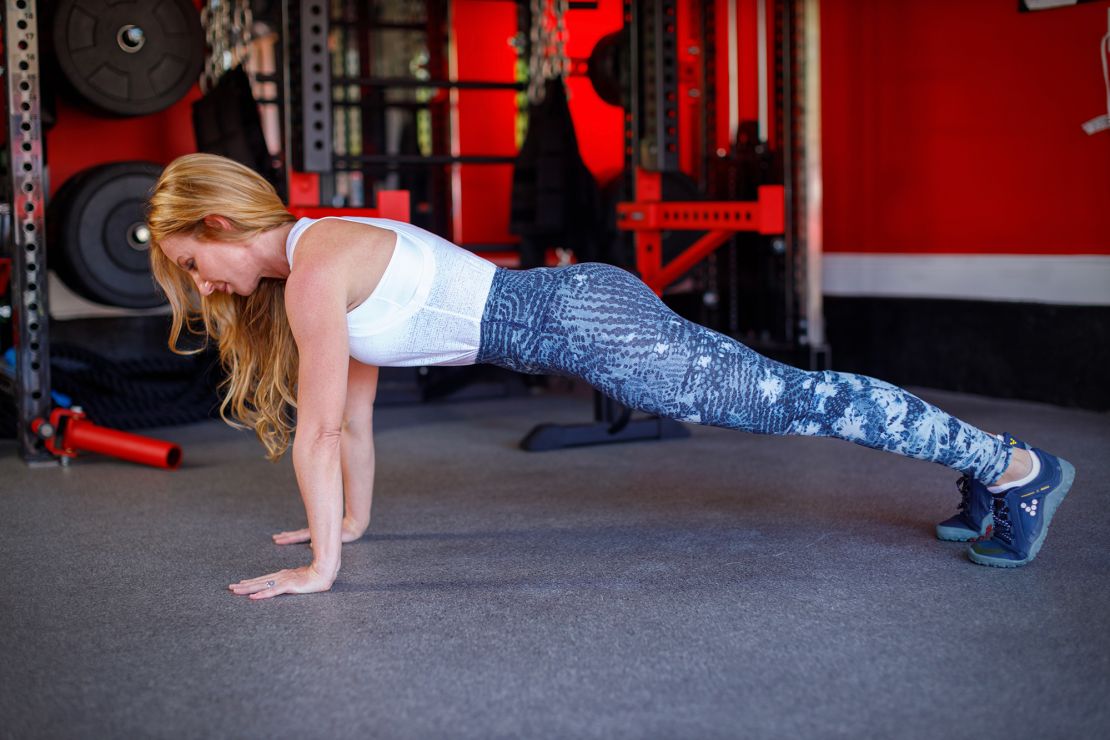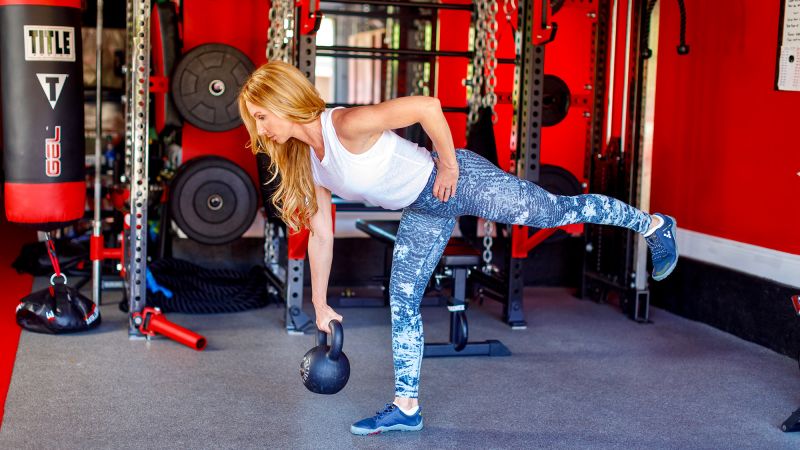Editor’s note: Dana Santas, known as the “Mobility Maker,” is a certified strength and conditioning specialist and mind-body coach in professional sports, and is the author of the book “Practical Solutions for Back Pain Relief.”
CNN
—
If you’ve been hitting the gym regularly and feeling stronger — but also stiffer and more slouched — you may be overlooking key elements that create balance in your workouts.
Despite good intentions, many people unknowingly reinforce poor posture with their strength-training workouts, leading to tight muscles, restricted mobility and even chronic pain.
A few simple adjustments can help you train smarter so that your workouts boost your strength while improving your posture, leaving you moving better in and out of the gym.
Your posture reflects how your body balances and supports itself during movement. Ideally, that balance includes a fluid alignment of your head, shoulders, spine and pelvis. Having poor posture — with slumped shoulders, a rounded back and a forward head position — stems from muscular imbalances, in which some muscles are overworked and tight while others are underused and weak.
Unfortunately, many common practices in strength-training workouts can reinforce these imbalances.
Consider a training plan heavy on bench presses, push-ups and crunches. These moves all strengthen muscles on the front of your body, including the chest, abs and hip flexors, without addressing muscles on the back of your body that help support upright posture, such as the mid back, glutes and hamstrings. Over time, this imbalance can pull your body forward into a rounded, collapsed position.
Even when your workouts are balanced, lifting with poor form, such as letting your shoulders hunch during rows or squats, can ingrain postural dysfunction. This issue becomes especially true when you perform the exercises repeatedly under load.

The good news is you don’t have to give up your favorite exercises. Try making these three strategic adjustments to keep building strength in a way that also improves your posture and mobility.
1. Balance pushing and pulling exercises
One of the simplest and most effective ways to support good posture through strength training is by creating balance in your workouts. For every pushing movement, such as push-ups or overhead presses, include a pulling movement such as rows or band pull-aparts.
Pulling movements activate the muscles in your upper and middle back that help counteract the forward-pulling effect of dominant front-body muscles. If, like most people, the movements of your daily life include a lot of reaching, pushing and sitting, ideally, you should include more pulling than pushing exercises in your workouts.
You also should balance lower body training to ensure that you are strengthening both the fronts and backs of your legs. Squats and lunges are great for your quads (upper front-leg muscles) and your glutes, but it’s also important to incorporate hinging movements, such as dead lifts and hip thrusts, which emphasize hamstring (upper back-leg muscles) strength.
Mobility work is not just for warm-ups or recovery days — it’s a critical part of training to maintain healthy posture and keep you moving well. Tight muscles from strength training can limit your range of motion. Without mobility work, you may start compensating in ways that increase joint stress and postural strain.
Add mobility drills that target commonly restricted areas, primarily the back, hips and shoulders. Even just five minutes of yoga or other intentional mobility work before or after your workout can reduce stiffness and enhance movement patterns.
Three of my go-to mobility exercises to include in strength-training programs are:
• Wall slides to activate postural muscles in your mid back and counteract overactive muscles in your neck and chest.
• Three-way hip flexor release to mobilize your hips and reduce lower back tension.
• Windmill twist to promote thoracic and shoulder mobility while opening your chest, releasing low-back tension and stretching the backs of your legs.

Form matters, especially when it comes to posture. Practicing proper alignment during workouts reinforces good movement patterns that carry over into daily life.
That means paying attention to:
• Head and neck position: Avoid jutting your chin forward or tensing your neck.
• Shoulder positioning: Keep your shoulders down and back, not shrugged up toward your ears.
• Spinal alignment: Maintain a neutral spine, avoiding excessive arching or rounding.
• Breathing: Exhale during the effort phase of exercises (e.g., the pushing-up phase of a push-up) to support core engagement and help maintain stable posture.
If you’re unsure about your form, consider working with a certified personal trainer or filming yourself to check alignment during exercises. Try not to rely solely on mirrors, which, as you crane your neck to see yourself, can sometimes encourage unnatural head positions that throw off your posture.
Making these small changes to your workouts will deliver big benefits. By training smarter, you can more effectively build strength that supports good posture and healthy, pain-free movement.
Sign up for CNN’s Fitness, But Better newsletter series. Our seven-part guide will help you ease into a healthy routine, backed by experts.

